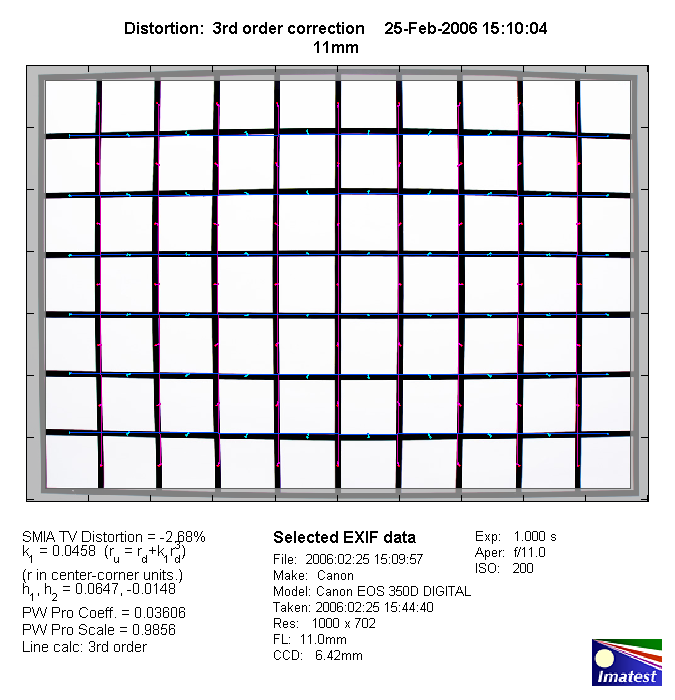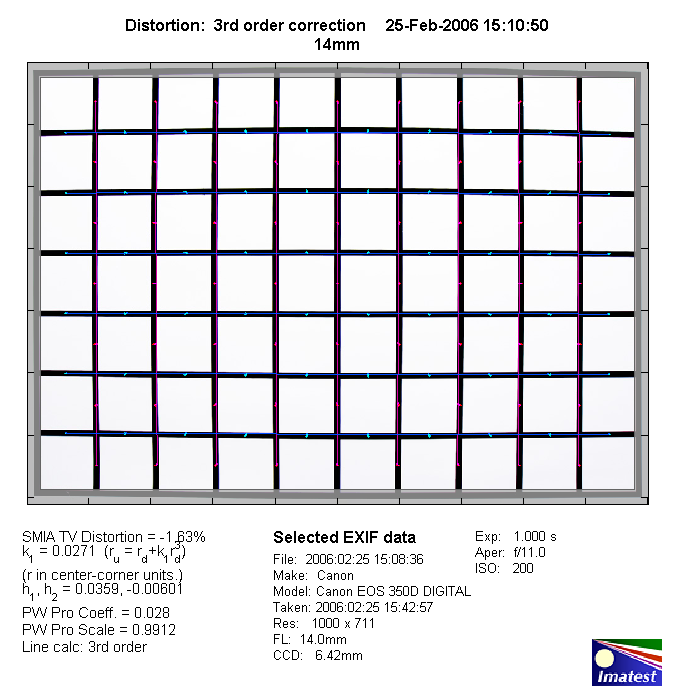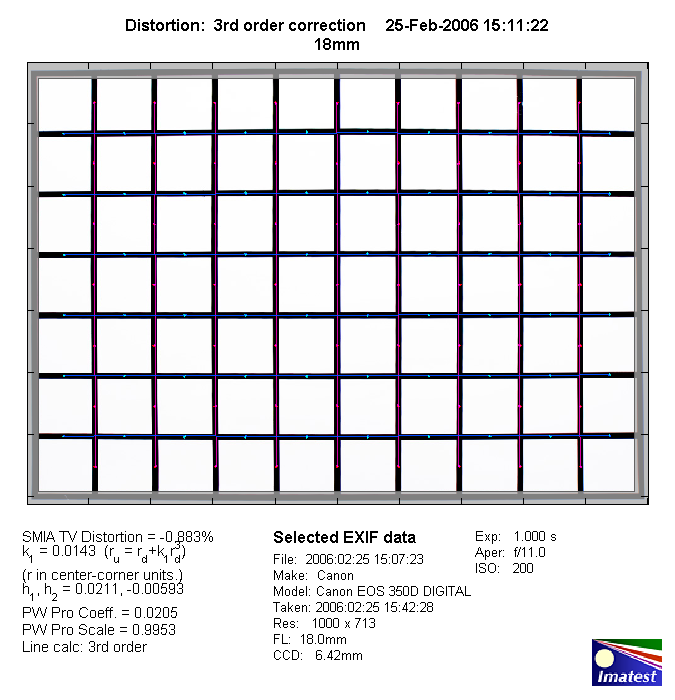|
Tamron AF 11-18mm f/4.5-5.6 SP Di II LD Aspherical (IF) - Review / Test Report - Analysis |
|
Lens Reviews -
Canon EOS (APS-C)
|
|
Page 2 of 3
Distortion
Typical for most ultra-wide zooms the Tamron shows very pronounced barrel
distortion at the wide end - at 2.7% it's quite a bit more than the Canon EF-S
10-22mm or the Tokina AF 12-24mm AT-X. The situation eases a bit towards
14mm before changing to moderate pincushion distortion at 18mm.
This is a little disappointing regarding the very limited zoom range which
would normally suggest better distortion figures.
11mm:

14mm:

18mm:

The chart above has a real-world size of about 120x80cm or 40x the focal length.
Expect more distortion towards closer focus distances.
Vignetting
The vignetting characteristic of the Tamron is pretty good for an APS-C ultra-wide lens
with a light falloffs of less than 1EV at wide-open aperture. One
stop down the issue is already well controlled.

MTF (resolution)
In the MTF lab the Tamron didn't completely convince. The center resolution is
exceptionally high straight from the max. aperture setting scratching the
limits of the EOS 350D sensor at the wide end of the zoom range. Unfortunately
the borders and especially the extreme borders (95% off the center) leave something
to be desired at 11mm. Choosing a medium aperture setting is a good idea here but
even then the results remain somewhat substandard at the borders.
The lens has its sweet spot at 14mm (at f/5.6 the center is also beyond 2000 LW/PH
here) - even the extreme borders get lifted to good levels here.
At 18mm the center performance deteriorates a little but the border quality
remains decent.
The lens exhibited a pretty even quality distribution (very low centering defect)
which is seldom. The field curvature was also very low.
Please note that the MTF results are not directly comparable across the different systems!
Below is a simplified summary of the formal findings. The chart shows line widths per picture height (LW/PH) which can be taken as a measure for sharpness.
If you want to know more about the MTF50 figures you may check out the corresponding Imatest Explanations
Chromatic Aberrations (CAs)
Chromatic aberrations (color shadows at harsh contrast transitions) are very pronounced
though this isn't really unusual for such an ultra-wide zoom. Regarding an average
CA width of around 1.6 pixels at 11mm and 18mm it may be a good idea to consider
CA correction measurements (RawShooter has an on-the-fly correction, many other
tools offer manual controls).

|